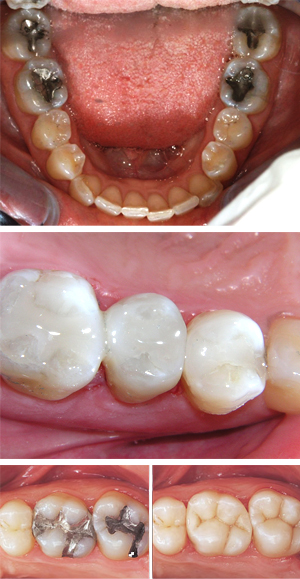Types of Filling

Tooth-Coloured Composite Fillings
Bond to tooth structure, thus can also be used to repair chipped, broken or worn teeth.
Wear out sooner than amalgams (lasts on average 5 to 8 years,compared with at least 10 to 15 for amalgams); in addition, they may not last as long as amalgams under the pressure of chewing and particularly if used as the filling material for large cavities.
More expensive.
Amalgam Fillings
Silver coloured fillings don't match the colour of you natural teeth.
Last on average 10 to 15 years and usually outlast white fillings.
Strength - can withstand chewing forces. This kind of filling is normally used on the back 'chewing' teeth.
Are there any risks from amalgam fillings? Mercury in dental amalgam is harmless as it is combined with silver and tin in the amalgam filling. Research into the safety of dental amalgam has been carried out for over 100 years. No reputable controlled studies have found a connection between amalgam fillings and any medical problem. Crowns: If a tooth is broken, weakened by decay, or has a large filling, a crown covering the whole tooth would be a stronger alternative. They can be made of porcelain so they can look just as good as a natural tooth.
WHY REPLACE A FILLING?
Fillings don't last forever. When you chew, your teeth and any fillings in them are subjected to tremendous pressures. Even if no other problems develop, some fillings will wear out over time and will need to be replaced. Fillings that are cracked or leaking can decay underneath them. Decay under a filling can become extensive before you notice it or it causes you pain. This can be prevented by having your fillings checked regularly and getting them replaced when problems are found.
